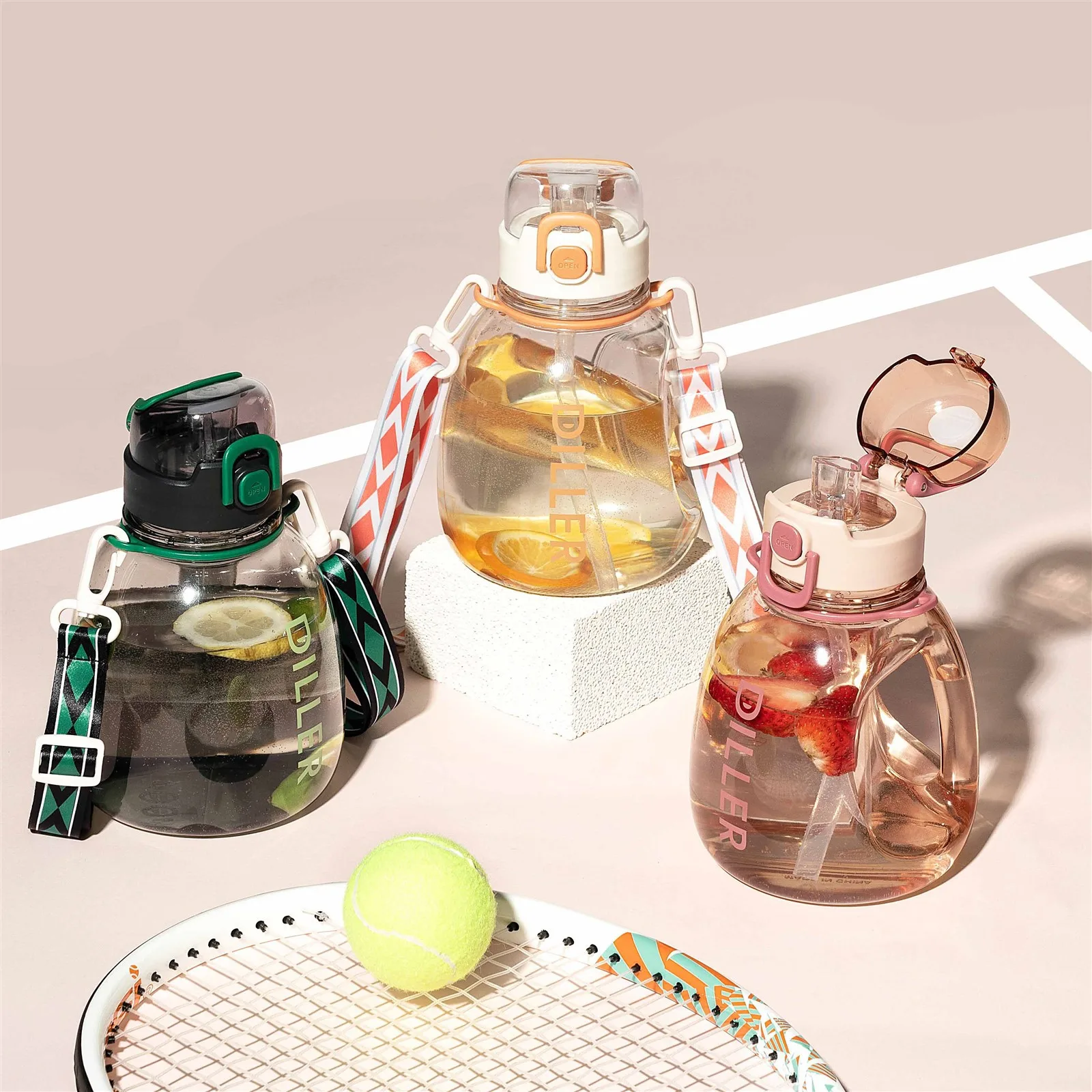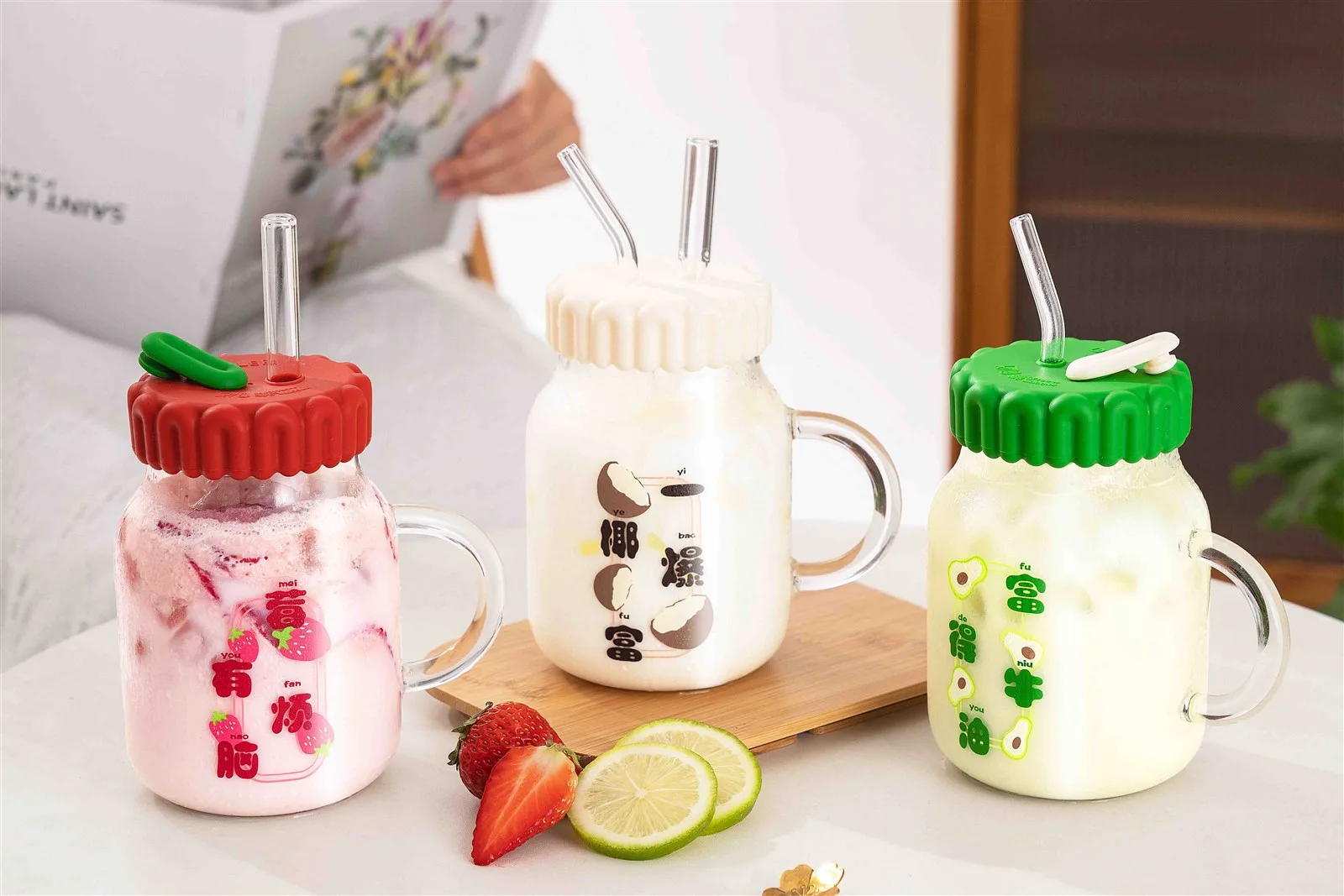Hieronder vindt u een algemene introductie tot het volledige productieproces en de voorzorgsmaatregelen voor glazen bekers en plastic waterflessen.
Het productie- en verwerkingsproces van plastic bekers kan worden onderverdeeld in de volgende stappen:
1. Voorbereiding van grondstoffen: De belangrijkste grondstof voor plastic bekers zijn plastic deeltjes. Het is noodzakelijk om plastic deeltjes van verschillende materialen te selecteren op basis van productvereisten en kwaliteitscontroles uit te voeren om ervoor te zorgen dat de kwaliteit van de grondstoffen aan de vereisten voldoet.
2. Smelten van grondstoffen: Doe plasticdeeltjes in een extruder en smelt ze bij hoge temperatuur tot een gesmolten kunststof.
3. Vormen van mallen: De gesmolten plastic smelt wordt door de malmond geleid om een plastic film of plaatmateriaal te vormen. De mal moet worden ontworpen en vervaardigd volgens de productgrootte en -vorm om de dimensionale nauwkeurigheid en oppervlaktekwaliteit van het product te garanderen.
4. Koelen en vormen: De gevormde kunststoffolie of -plaat wordt gekoeld en gevormd via een koelapparaat om de gewenste productvorm en -grootte te bereiken.
5. Snijden en stempelen: Snijd en stempel de afgekoelde en gevormde plastic film of plaat om de gewenste bekerbehuizing en deksel te vormen.
6. Assemblage en verpakking: Stel de beker en het deksel samen, sluit deze af met een sealmachine en verpak het product tot slot.
7. Kwaliteitscontrole: Tijdens het productieproces zijn meerdere kwaliteitsinspecties vereist, waaronder inspectie van het uiterlijk, de grootte, de sterkte, enz. Gekwalificeerde plastic bekers moeten worden gereinigd en verpakt voor verzending.
8. Verpakking en transport: De verpakking van plastic bekers vereist maatregelen zoals schokbestendige en anti-valmaatregelen om ervoor te zorgen dat het product niet beschadigd raakt tijdens het transport. Tegelijkertijd is het noodzakelijk om redelijke transportmethoden te kiezen op basis van de kenmerken van het product en de behoeften van de klant, zoals landtransport, luchttransport, zeetransport, enz.
Naast de bovenstaande processtappen moeten de volgende punten in acht worden genomen: zijn opgemerkt:
1. Hygiënecontrole tijdens het productieproces: Omdat plastic bekers producten zijn die direct in contact komen met voedsel, is hygiënecontrole tijdens het productieproces erg belangrijk. Het is noodzakelijk om een schone en hygiënische werkomgeving te behouden tijdens het productieproces en om reinigings- en desinfectiemiddelen van voedingskwaliteit te gebruiken.
2. Apparatuurvereisten: Voor de productie van plastic bekers is professionele apparatuur voor de verwerking en het testen van roestvrij staal nodig, zoals extruders, mallen, koelapparatuur, snijmachines, stansmachines, enz. De prestaties en kwaliteit van de apparatuur hebben een aanzienlijke invloed op de kwaliteit en prestaties van de geproduceerde producten.
3. Kwaliteitscontrole: Tijdens het productieproces zijn meerdere kwaliteitsinspecties en -controles vereist, zoals inspectie van de oppervlaktekwaliteit, inspectie van de grootte, inspectie van de sterkte, enz. Kwaliteitscontrole is een belangrijke schakel in het waarborgen van de productkwaliteit en vereist een strikte controle van verschillende procesparameters en inspectienormen.
4. Verpakking en transport: De verpakking van roestvrijstalen geïsoleerde bekers vereist maatregelen zoals schokbestendige en anti-valmaatregelen om ervoor te zorgen dat het product niet beschadigd raakt tijdens het transport. Tegelijkertijd is het noodzakelijk om redelijke transportmethoden te kiezen op basis van de kenmerken van het product en de behoeften van de klant, zoals landtransport, luchttransport, zeetransport, enz.
Het productie- en verwerkingsproces van glazen bekers kan worden onderverdeeld in de volgende stappen:
1. Voorbereiding van grondstoffen: De belangrijkste grondstof voor glazen bekers zijn glasdeeltjes. Het is noodzakelijk om glasdeeltjes van verschillende materialen te selecteren op basis van productvereisten en kwaliteitscontroles uit te voeren om ervoor te zorgen dat de kwaliteit van de grondstoffen aan de vereisten voldoet.
2. Smelten van grondstoffen: Doe glasdeeltjes in een oven met hoge temperatuur en smelt ze tot gesmolten glas bij hoge temperaturen.
3. Vormen van mallen: Gesmolten glassmelt wordt door de malmond geleid om een glasfilm of plaatmateriaal te vormen. De mal moet worden ontworpen en vervaardigd op basis van de productgrootte en -vorm om de dimensionale nauwkeurigheid en oppervlaktekwaliteit van het product te garanderen.
4. Koelen en vormen: De gevormde glasfolie of -plaat wordt gekoeld en gevormd via een koelapparaat om de gewenste productvorm en -grootte te bereiken.
5. Snijden en stempelen: Snijd en stempel de gekoelde en gevormde glasfolie of -plaat om de gewenste bekerbehuizing en deksel te vormen.
6. Assemblage en verpakking: Stel de beker en het deksel samen, sluit deze af met een sealmachine en verpak het product tot slot.
7. Kwaliteitscontrole: Tijdens het productieproces zijn meerdere kwaliteitsinspecties vereist, waaronder inspectie van het uiterlijk, de grootte, de sterkte, enz. Glazen bekers die de inspectie doorstaan, moeten worden schoongemaakt en verpakt ter voorbereiding op verzending.
8. Verpakking en transport: De verpakking van glazen bekers vereist maatregelen zoals schokbestendige en anti-valmaatregelen om ervoor te zorgen dat het product niet beschadigd raakt tijdens het transport. Tegelijkertijd is het noodzakelijk om redelijke transportmethoden te kiezen op basis van de kenmerken van het product en de behoeften van de klant, zoals landtransport, luchttransport, zeetransport, enz.
Naast de bovenstaande processtappen moeten de volgende punten in acht worden genomen: opgemerkt worden:
1. Hygiënecontrole tijdens het productieproces: Als product dat direct in contact komt met voedsel, is hygiënecontrole tijdens het productieproces erg belangrijk. Het is noodzakelijk om een schone en hygiënische werkomgeving te behouden tijdens het productieproces en om reinigings- en desinfectiemiddelen van voedingskwaliteit te gebruiken.
2. Apparatuurvereisten: Voor de productie van glazen bekers is het gebruik van professionele apparatuur voor glasverwerking en -testen vereist, zoals glasovens, mallen, koelapparatuur, snijmachines, stansmachines, enz. De prestaties en kwaliteit van de apparatuur hebben een aanzienlijke invloed op de kwaliteit en prestaties van de geproduceerde producten.
3. Kwaliteitscontrole: Tijdens het productieproces zijn meerdere kwaliteitsinspecties en -controles vereist, zoals inspectie van de oppervlaktekwaliteit, inspectie van de grootte, inspectie van de sterkte, enz. Kwaliteitscontrole is een belangrijke schakel in het waarborgen van de productkwaliteit en vereist een strikte controle van verschillende procesparameters en inspectienormen.
4. Verpakking en transport: De verpakking van glazen bekers vereist maatregelen zoals schokbestendige en anti-valmaatregelen om ervoor te zorgen dat het product niet beschadigd raakt tijdens het transport. Tegelijkertijd is het noodzakelijk om redelijke transportmethoden te kiezen op basis van de kenmerken van het product en de behoeften van de klant, zoals landtransport, luchttransport, zeetransport, enz.



